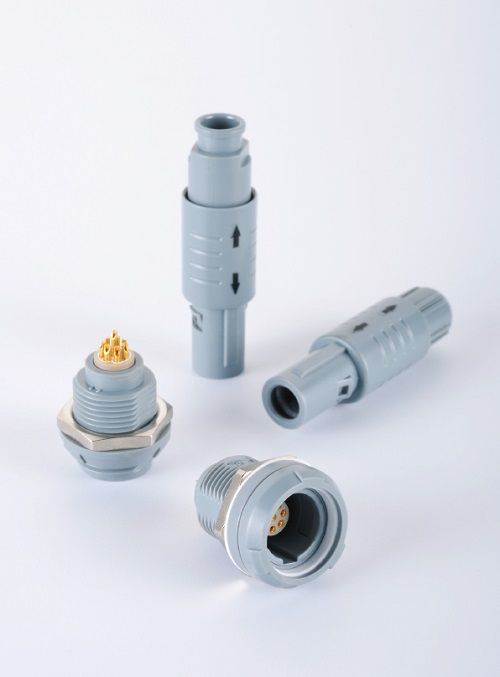Characteristic Requirements for Medical Connectors
Connector interfaces can be pulled out properly and well designed for visual inspection to reduce debris accumulation. If pollutants are found, they can be removed before they affect performance. The disinfection process of medical devices, especially the contact with disinfection wipes, gamma-ray radiation, ethylene gas contact, high-pressure sterilization and Sterrad process, also have an impact on the selection and design of materials. Each disinfection method will produce different levels of exposure, exposure to various chemicals, reactions, and risk the integrity of connectors. Medical technology applications usually require connectors to withstand fluid intrusion, and in most cases require IP6 or IP7 level protection. According to the connection mode with equipment, medical connectors are divided into locking type and non-locking type. In components that connect patients to portable devices, a firm locking connection is usually required to avoid accidental disconnection. In addition, the connector may need to be disconnected safely when the axial force is applied to avoid accidental injury to patients, connectors or cable components. Even in unlocked connectors, medical cables need to provide rigid connections between plugs and sockets. Loose connections can lead to discontinuous contact, unnecessary noise or signal degradation, which can interfere with the performance of the equipment. The selection of pins and sockets, as well as the physical design of plugs and sockets, can realize the control of insertion and retention force. Retention force defines the firmness of the connector maintained by the socket. If the connector is expected to have a higher number of insertions, it is generally necessary to achieve retention through metal pins and slots. In some cases, for example, if a portable defibrillator needs a firmly locked connector, a flexible cover can be wrapped around the connector to protect the locking mechanism in a reasonable case. If the retaining force is achieved through the pin slot and the friction of the connector housing is insufficient, the retaining force can be improved by design, so that the axial force applied to the cable will not be directly applied to the axis of the connector to remove the external force. Conversely, the design of unlocked connectors can disconnect the connectors by applying an axial force to the cable. The use of right-angle connectors can enhance retention and prevent accidental pull-out in another way. During the plug-in process, the retention force is measured at pre-established time intervals to ensure that the required retention force is maintained during the design life of the connector. For the final design to ensure that the requirements meet or exceed the specifications, the verification test of medical connectors plays a vital role. Connector specifications depend mainly on the intended use in the real world environment. Various application functions, as well as any potential misuse, together determine the physical properties required by the connector. In portable devices, design requirements are much higher, allowing patients to move freely. Use in clinical settings
Latest News
Contact Us
Name: Eva
Tel: +86-13620041989
E-mail: eva@newlyconnector.com
Skype: 13620041989
Add: 1003, Number 9, Anjuyuan, Ganjingzi District, Dalian City,116033,China







 Skype Chat
Skype Chat Mail inquiry
Mail inquiry